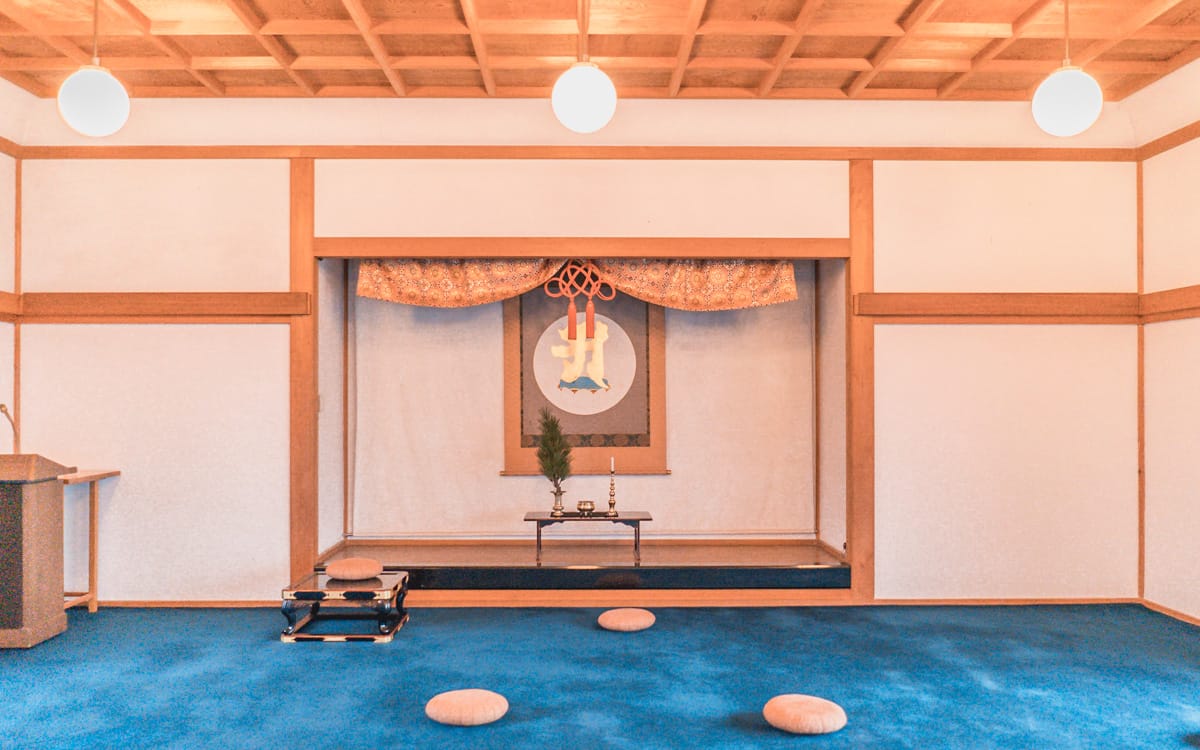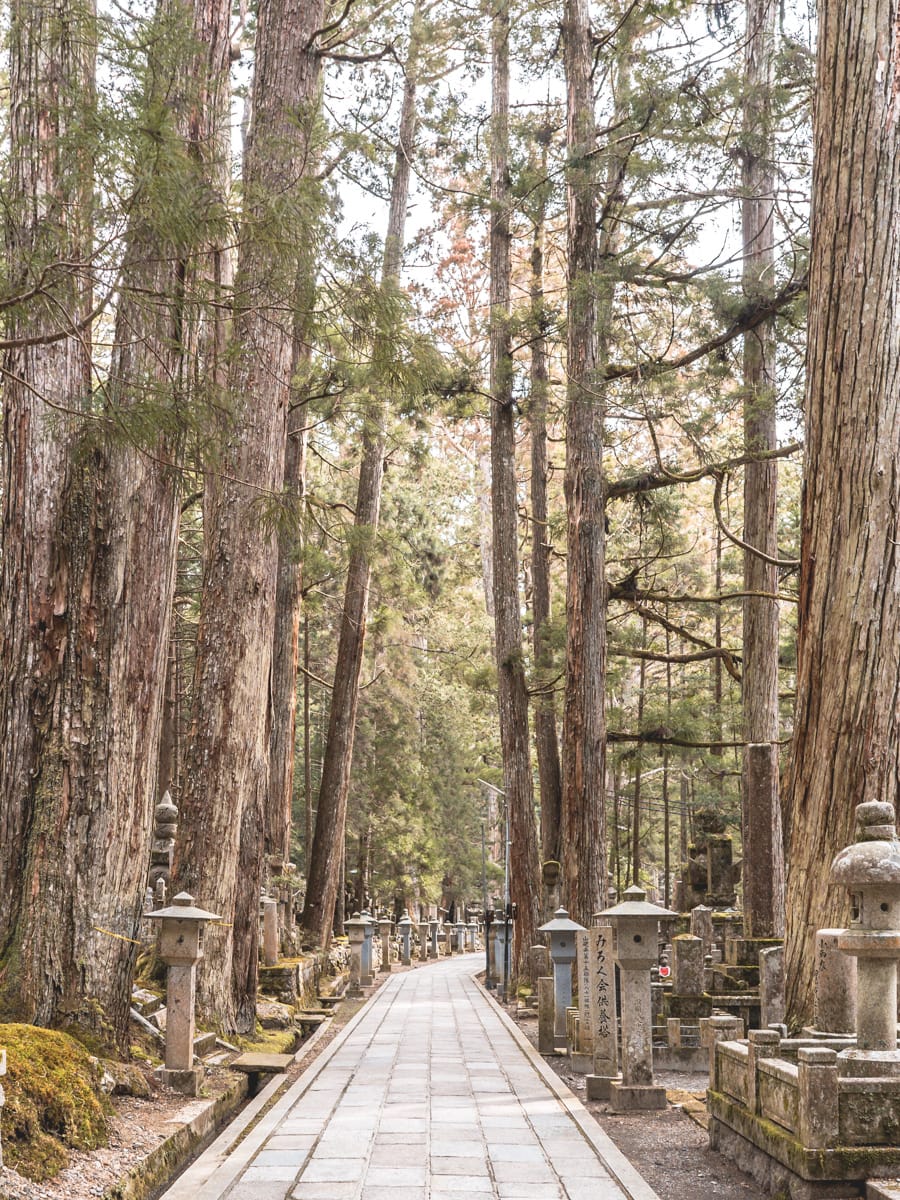
Learn from the past. Prepare for the future. Live in the present – TM
Up in the mountains surrounded by the beautiful forested Kii Peninsula, I recently experienced an overnight temple stay, known as shukubo in Mount Koya (高野山, Kōyasan). It’s a perfect glimpse into a monk’s lifestyle of morning prayers and vegetarian monk cuisine, known as shojin ryori. In a quiet town filled with monks, meditation and monasteries, it’s a place off the beaten path and the centre of Shingon Buddism. Follow me on the best things to see and do while in Mount Koyasan.

Table of Contents
Things to see & do
Koyasan is the centre of Shingon Buddism and was introduced by Kobo Daishi (known as Kukai) in 805 to Japan. In 826, Kobo Daishi began construction of the Garan temple after many years of searching for a suitable place to centre his religion. Among the many temples are kongobuji (the head temple of Shingon Buddism), and Okunion cemetery (site of Kobo Daishi’s mausoleum) are the most important.
From 2004, Koyasan is a UNESCO World Heritage Site as part of the ‘Sacred Sites and Pilgrimage Routes in the Kii Mountain Range’, located in Wakayama Prefecture.
Daimon, Gate of Koyasan
Our first stop was Daimon, the main gate, it marks the entrance of Koysan. This massive crimson building that’s 25m tall with a Kongorikishi statue of guardian gods on the left and right watching over the entrance. It’s said once you walk through the Daimon gate, Koyasan reveals itself.

Learn Ajikan Meditation at Ekoin Temple
Next, we arrived at Ekoin Temple for our Ajikan (Japanese style Shingon meditation) session at 4:30 pm held daily. We were greeted at the entrance by a monk dressed in light orange robes then led through the halls to the meditation room. Led by a Buddhist monk, the session starts with our focus on the front of the room as he teaches us how to sit and breathe. As we sat silently, we were told to keep our eyes half-closed and count up to ten then count again, whilst maintaining a relaxed state of meditation.
Ekoin Temple provides English mediation session under the guidance of a Buddhist monk. Offering to those staying at the temple and those visitors not staying in Ekoin can join.
→ More: Discover Kinosaki Onsen town
Temple stay and Shojin Ryori (vegetarian cuisine)
The best way to experience Mt Koyasan is to stay overnight at one of their many temples. There are 52 temple lodging options, along the main street. We stayed at Jimyo-in temple, filled with ryokan styled rooms, tatami mats on the floor and futons (traditional styled bed) that are assembled after dinner.
For dinner and breakfast, we had Shojin Ryori, a traditional vegetarian Buddhist cuisine. An assortment of dishes with natural ingredients, entirely of vegetable and edible wild plans that taste like a symphony of delicate and rich flavours. A speciality is the koya dofu (freeze-dried tofu) and goman dofu (Sesame Tofu). Sesame Tofu is one of the delicacies and one of my favourite dishes. Its ground forms white sesame seeds and kuzu flour and tastes silky and creamy.
After dinner, I returned to my room before heading down to use the communal shared public bathrooms. There is one for men and one for women. This is typical at a shukubo. Not use to the idea of public baths, I quickly showered and dipped into the onsen before heading back to my room.
It was a chilly winter evening during February, and I was so glad the table in our room was heated.
→ More: A glimpse into an Onsen town: Kinosaki Onsen
At 7am, we attended the ‘otsutome’ (Buddhist Ceremony) morning chanting. During the ceremony, the monk started chanted, and we took turns to throw some incense into a bowl. Then breakfast was served in our rooms.

Visit Okunoin
After, we walked along the path lined by centuries-old cedar trees, through the spiritual grounds of the Okunoin Cemetery. It’s the largest and most ancient cemetery in Japan with over 500,00 tombstones and Buddhist memorials. It is considered the most sacred place at Koyasan. The site of Kobo Daishi’s mausoleum, where he is believed to be in eternal meditation.
We began walking at the Ichinohashi bridge, which is a 2km long path that’s about a 40-minute walk (one way). An alternative starting point is towards the middle that starts halfway up near Koyasan Shubuko association Nakanohashi Office. The beginning seems quieter until you reach the middle where most people join. Deep in the misty forest, it seemed as though we could sense the spirituality of Koyasan. Along the path, we spotted Gorinto, which are small Buddhist pagodas. It is said to represent the Five Elements including water, air, earth, fire, and energy, or void. Some dressed in a vermilion bib, these symbolise offerings from mothers to protect their children in this world or to bring them luck in the afterlife.

Crossing the Gobyo no hashi Bridge we enter the sacred ground of Kobo Daishi (Kukai). It is said to be like crossing a bridge between two worlds and where Kobo Daishi entered the next world. Just before entering we bow to should our respect. Past this point food, drinks and photographs are not allowed.
On the other side, the atmosphere is different as we follow the path to Torodo (lantern hall). It houses over 10,000 lanterns that burn endlessly day and night, which are said to have remained lit since the 11th century.
Danjo Garan (Dai Garan) Complex
The Dainjo (Great) Garan is one of the most important areas in Koysan. It’s a sacred area founded by Kukai (known as Kobo Daish) and the main area for study, training and rituals of Shingon (Esoteric) Buddism. We wondered around Garan, and its surrounding halls, shrines and pagodas.
→ More: Discover Hakone: a day trip from Tokyo
Konpon Daito (Great Pagoda)
Standing almost 50 meters tall and 30 meters wide is the largest structure of the Garan is the Konpon Daito. It was constructed from 816 to 887. The building has been destroyed and rebuilt five times in its history, the current structure dates from 1937. It is believed to be Japan’s first square two-storied pagoda.

Kongobuji Temple
Nothing is lost, nothing is created, everything is transformed – Antoine Lavoisier
Kongobuji is the administrative head temple of Koyasan Shingon Buddhism. It is filled with historical screen paintings and one of Japan’s largest rock garden, the Banryutei.
We entered and walked along the long hallways around the temple. As we walked through the temple, we admired the paintings of each room. Each room is filled with unique paintings of flowers, cranes and trees.
Outside the temple, we saw a huge rock garden known as Banryutei rock garden. It’s the largest rock garden in Japan, measuring 2349 square meters. There are 140 granite stones arranged to suggest a pair of dragons emerging from a sea of clouds to protect the Okuden.
Where: 132 Koyasan, Koya-cho, Ito-gun 648-0211, Wakayama PrefectureOpen: 8:30am – 5pm daily with the last admission being 4:30pm.
Entry fee: 500 Yen
*All hours and prices are correct at time of post. Please check before going.
→ More: Discover Hakone: a day trip from Tokyo

How to get to Koyasan
We travelled by car to Koysan but there are many ways to get there by train, rail or bus.
Osaka Namba Station → Gokurakubashi Station → Cablecar
By train, Koyasan is an approximately an 80-minute train journey from Osaka Namba Station by Nankai Koya Line to Gokurakubashi Station and then cable car to Koyasan.
From Osaka Namba Station
| Limited express trains Frequency: trains run 5 times per day Duration: 80 minutes Cost: 1650 yen | Rapid trains Frequency: departs every 20-30 minutes Duration: 100 minutes Cost: 870 yen |
| *most require a transfer at Hashimoto Station |
Gokurakubashi Station → Cablecar → Bus or taxi to town centre
| Cablecar up the mountain Frequency: departs every 20-30 minutes Duration: approx 5 minutes Cost: 390 yen | Bus Duration: approx 10 minutes Cost: 290 yen |
Tickets – Passes and discount tickets to Koyasan
Koyasan World Heritage TicketCost: 2860 yen, can be used over 2 days
Available from Nankai Namba, Shin-Imamiya and Tengachaya Stations, includes:
Happy Travels!
Monks, meditation and monasteries on the mountaintop of Koyasan, Mt Koya, the centre of Shingon Buddhism. A perfect way to experience a monk’s lifestyle, and a unique overnight temple stay.







